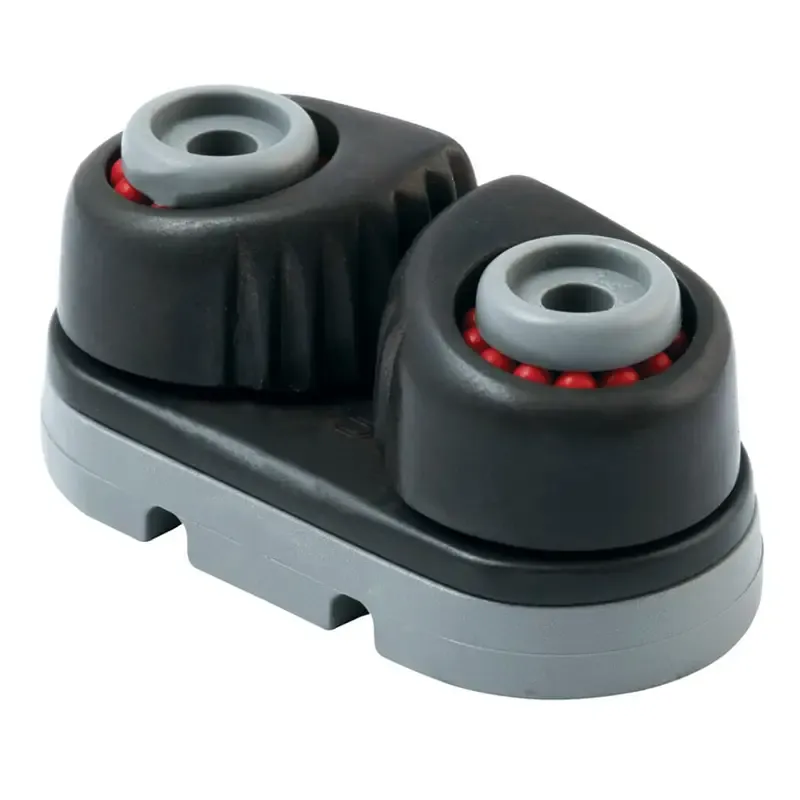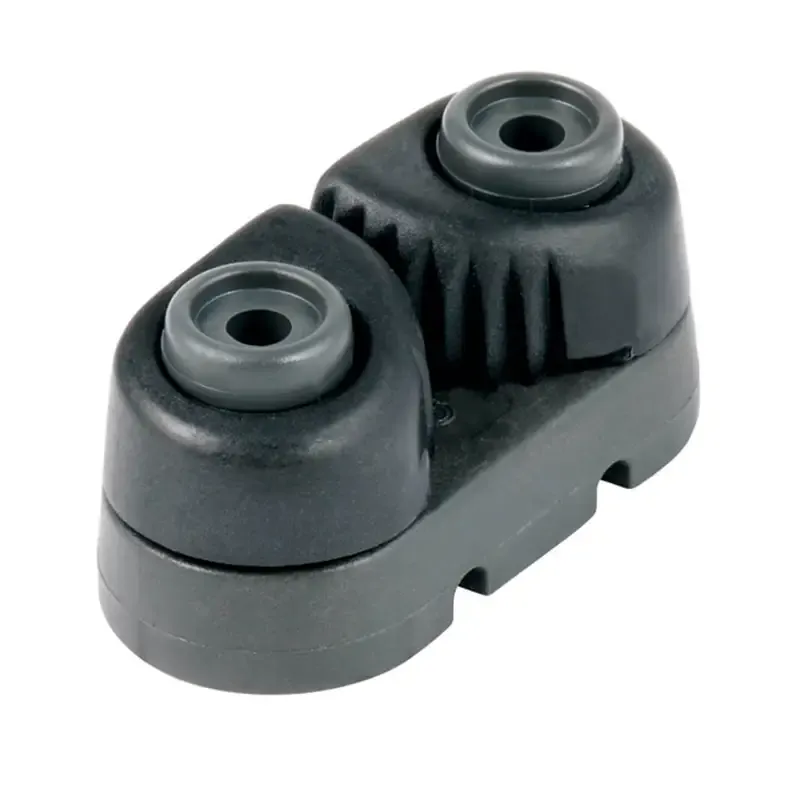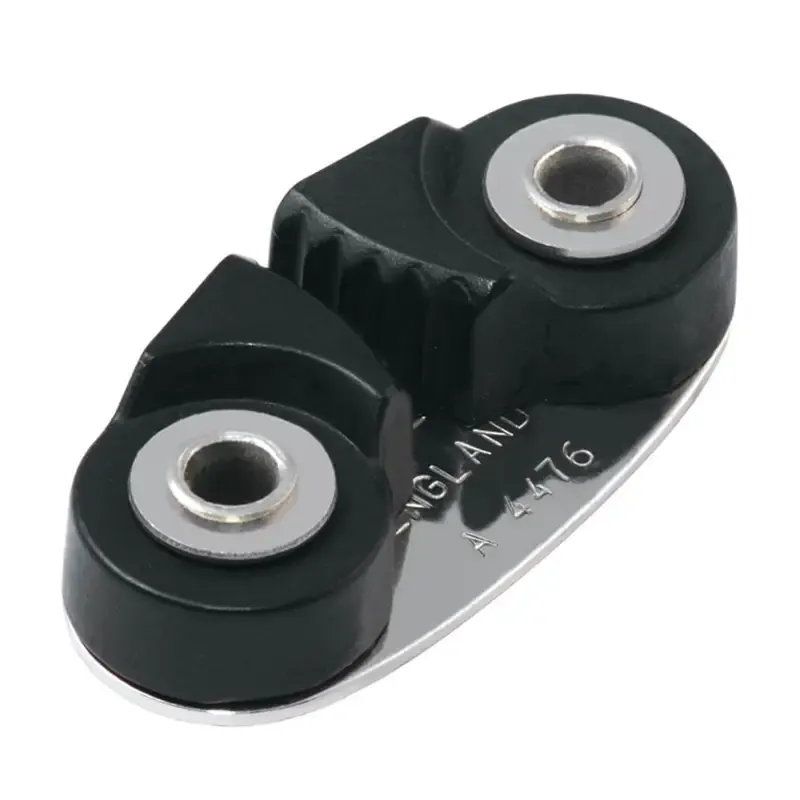Check out the start of a new series by Allen on Cam Cleats titled: Exploring Cam Cleats

In this four-part series posted over the next four weeks, we will delve into the world of cam cleats, explore the accessories that complement their functionality, and discover the myriad of applications across different sailing scenarios. By understanding the principles and versatility of cam cleats, you’ll be better equipped to optimise your sailboat’s performance and enjoy a more seamless and enjoyable sailing experience.
Part 1: Understanding Cam Cleats
Cam cleats are essential components in the world of sailing, playing a crucial role in enhancing control, efficiency, and safety on sailboats of all sizes. These cleverly designed devices are specifically engineered to secure lines (ropes) in place while allowing quick and controlled adjustments. Their innovative mechanism consists of a grooved jaw or cam that securely grips the line when tension is applied, preventing it from slipping.
The significance of cam cleats lies in their ability to simplify sail handling, enabling sailors to fine-tune various control lines swiftly and precisely. Whether it’s adjusting the tension on sheets, controlling halyards, or managing other lines critical for sail trimming and manoeuvring, cam cleats provide sailors with a dependable and convenient means to manage the intricate dance between wind, water, and sail.
Here are a few examples of how cam cleats contribute to efficiency and control on sailboats:
Fine-Tuned Sail Trimming:
Sail trim is essential for optimizing boat speed and balance. Cam cleats enable sailors to finely tune control lines, such as sheets and halyards, to achieve the perfect sail shape. This precision contributes to better upwind and downwind performance, translating into faster speeds and improved handling.
Reduced Fatigue:
The ease of using cam cleats reduces the physical strain on sailors. Instead of continuously gripping and holding lines under tension, sailors can secure lines in cam cleats, freeing up their hands and energy for other tasks, like steering and navigation.
Safety and Predictability:
Securely locking lines in cam cleats reduces the chances of accidental line slippage, preventing unexpected sail adjustments that could compromise control or safety. Predictable sail handling contributes to a more stable and controlled sailing experience.
In essence, cam cleats act as reliable and efficient “hands-free” assistants for sailors, allowing them to focus on navigation, tactics, and enjoying the thrill of sailing. Their contribution to efficient sail handling and improved control makes them an indispensable tool for both casual cruisers and competitive racers, enhancing the overall sailing adventure.
How a Cam Cleat Works
A cam cleat is a mechanical device designed to secure a line (rope) in place under tension. It consists of a grooved jaw (or two cams), a base, and a spring mechanism. The cam cleat’s operation is quite ingenious and involves the following steps:
Loading the Cam:
To start, the line that needs cleating is pulled down and through the grooved jaw of the cam cleat. The jaw will swivel open and allow the line to be pulled through to the desired tension.
Locking the Line:
Once the desired line tension is reached the sailor can stop pulling the line. The spring-loaded jaws will grip the rope with help from the line tension, and the more line tension there is the harder the jaws will grip the line.
Adjustment:
To release or adjust the line, a sailor can simply pull the line up and out of the jaw. This then causes the cam to open and release its grip on the line. This allows for controlled adjustments to the line’s length or tension.
Types of Cam Cleats
Aluminium Ball Bearing Cam Cleat
Ball Bearing Cam Cleat – Medium
Ball Bearing Cam Cleat – Small
The Allen Brothers were the original inventors of aluminium cam cleats, a product which represents a remarkable evolution in sailing hardware, enhancing the efficiency and control of sailboat operations, particularly in demanding high-load situations and competitive racing scenarios.
At the heart of aluminium ball-bearing cam cleats lies a set of precisely engineered ball bearings. These small, spherical components are strategically placed within the cleat’s mechanism. When tension is applied to the line, the ball bearings facilitate the rotation of the cam, allowing it to engage or release the line with minimal friction. This design results in an exceptionally smooth and responsive action, making adjustments fluid and effortless.
Ball-bearing cam cleats find their true calling in racing environments. Whether on a dinghy or a high-performance racing yacht, every incremental advantage matters. The low friction provided by the ball bearings allows sailors to react promptly to changing wind conditions, trim sails with precision, and optimise boat speed with minimal energy expenditure.
Allenite Plain Bearing Cam Cleat
Allenite is a proprietary material we have developed specifically for low weight and good heat dissipation to increase wear resistance over standard acetals.
Allenite plain-bearing cam cleats are a more budget-friendly option than the aluminium ball-bearing equivalent. Ideal for sailors who want reliable line control without investing in higher-priced hardware.
These cam cleats are well-suited for moderate-load applications. If the sailing activities involve lines that don’t experience extremely high tension or loads, an Allenite cam cleat can provide sufficient grip and control whilst being lighter and more compact than their aluminium ball-bearing counterparts.
The Allenite plain-bearing cam cleats have a simpler internal mechanism, which can make maintenance and cleaning easier. Sailors who prefer straightforward maintenance routines might appreciate the simplicity of these cleats.
Steel Base Plain Bearing Cam Cleat
Stainless Steel Base Cam Cleat – Small
Stainless Steel Base Cam Cleat – Medium
Stainless steel plain-bearing cam cleats are low profile, lightweight and budget-friendly. These cam cleats have been developed for use in more industrial applications, where frictionless performance is less important.
A very low profile base made from stainless steel allows the cam cleat to be fixed to an array of surfaces whilst remaining as low as possible. The acetal jaws have also been optimised to reduce height and weight.
The assembly method of these cam cleats has been simplified to reduce costs, at the expense of serviceability. Once assembled these cleats cannot be serviced.
Suited for lower load but rugged applications, such as flag halyards, stage and entertainment rigging, assembly line production and agriculture uses, to name a few.
Summary
Cam cleats are mechanical products used for gripping lines. They are extremely useful in applications where a line is loaded and needs holding onto but also needs regular adjustment. Available in two material types to suit the specific needs of the application as well as two different sizes depending on line diameter.
Cam cleats are an essential piece of kit for all sailboats.
Join us in the upcoming instalment as we uncover the essential tools that complement these cleats. Together, we’ll unlock the secrets of efficient sail control, one accessory at a time. Stay tuned for next week’s Part 2: “Essential Accessories for Cam Cleats.”














































































































































































































